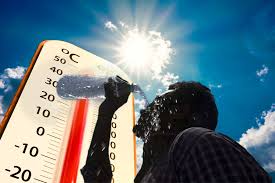As an AI language model, I don’t have access to real-time data or current events. However, I can provide you with information on some of the most common and destructive natural disasters that occur globally. Please note that the severity and impact of natural disasters can vary from year to year. It’s always advisable to consult official sources or organizations dedicated to tracking natural disasters for the most up-to-date information. Some common and dangerous natural disasters include:
1. Earthquakes: Powerful ground-shaking events that can cause significant destruction and loss of life.
2. Floods: Overflows of water, usually due to heavy rainfall, that can result in widespread damage and displacement.
3. Hurricanes and Cyclones: Powerful tropical storms characterized by strong winds and heavy rainfall, causing widespread destruction.
4. Tsunamis: Large ocean waves triggered by undersea earthquakes or volcanic eruptions, capable of causing massive destruction along coastlines.
5. Tornadoes: Violently rotating columns of air that can create devastating damage in their path.
6. Volcanic eruptions: Eruptions of volcanoes that can release ash, lava, and toxic gases, affecting nearby regions.
7. Landslides and Mudslides: Mass movements of rocks, earth, or debris that can occur due to heavy rains, earthquakes, or other triggering events.
8. Droughts: Extended periods of significantly below-normal precipitation, leading to water scarcity, crop failure, and economic hardships.
9. Heatwaves: Prolonged periods of excessively hot weather, often accompanied by high humidity, which can lead to health issues and heat-related deaths.
10. Wildfires: Uncontrolled fires that spread rapidly across vegetation, causing extensive damage to forests, properties, and human lives.
It’s important to keep in mind that the magnitude and impact of these natural disasters vary significantly from one event to another, and thus creating a definitive ranking is challenging.




